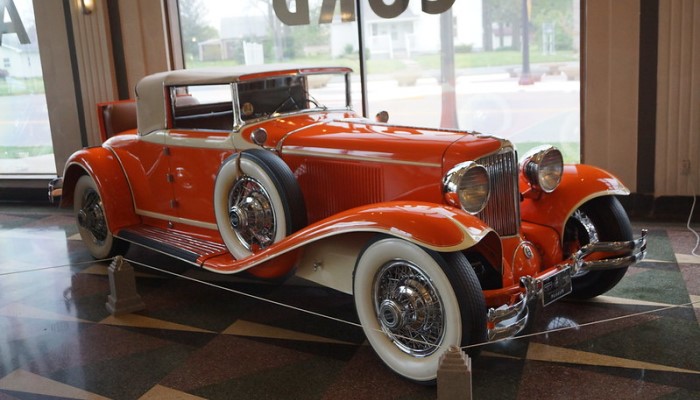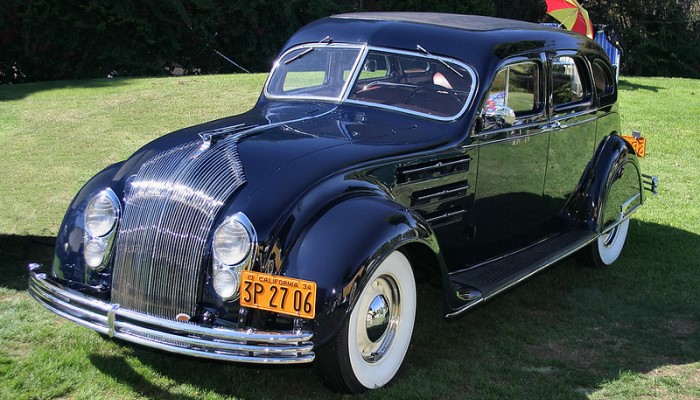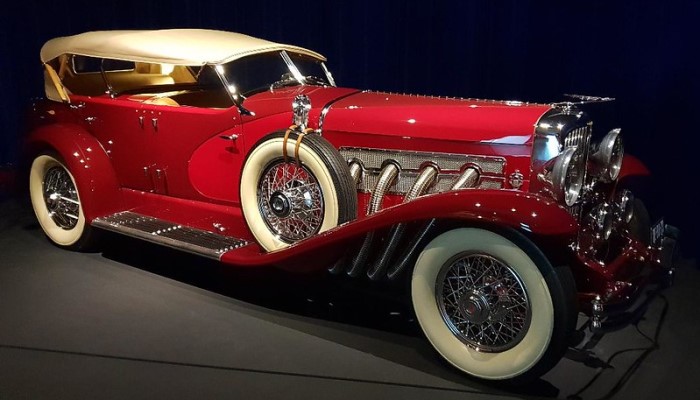Cord 810
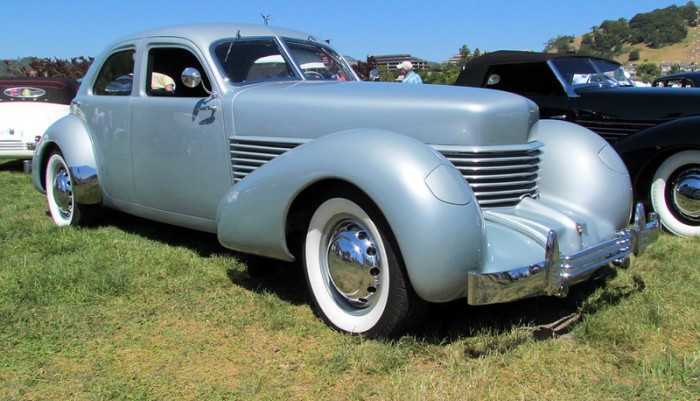
Photo: "1937 Cord 810 Westchester Sedan" by DBerry2006
Victim of Great Depression
In the fall of 1935, at the New York, Chicago, and Los Angeles car shows, the new Cord was a bombshell. Such a modern car, with a huge number of the latest technical developments, and most importantly, with such a futuristic design, none of the exhibition visitors have ever seen.
Dealers received 7,639 applications from those wishing to purchase this latest model in the near future. That is real success. Glory and financial prosperity of the Empire of Erret Lobban Cord.
In fact, things were not so good at all. From August to October 1935, instead of the required 100 copies of the new model, only a dozen and a half were almost manually assembled.
The machines are completely raw, with a lot of flaws and problems. The main one is transmission overheating. Cars are brought to the auto show with broken transmissions.
The Cord 810 was a completely new development for the company, and with the previous model L-29, they were related only by the presence of front-wheel drive. Yes, there were some similarities.
The Cord L-29 had a very long inline eight-cylinder engine, which, along with the transmission, was located far behind the front axle. The 810 featured the new V8 Lycoming, which was half as long, with the gearbox partially forward of the front axle.
This design allowed for much better weight distribution and allowed the wheelbase to be reduced to 125 inches (3,175 mm).
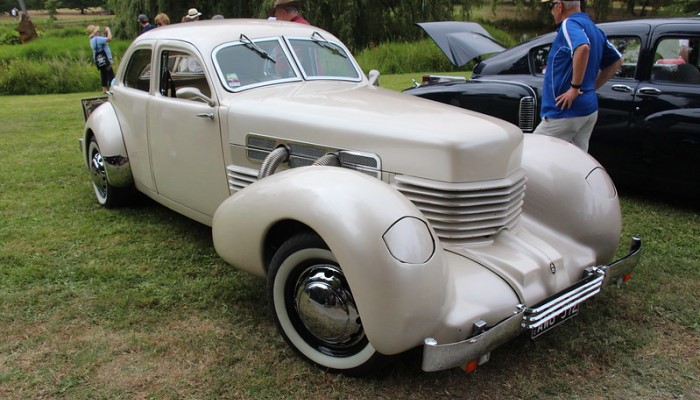
Photo: "1936 Cord 810 Westchester Sedan" by Sicnag
In 1936, the Cord 810 featured the following specialized and aesthetic inventions not available on any other vehicle:
1. Integrated into the body of the front of the frame with an independent front suspension on the transverse leaf spring. The use of front-wheel drive made it possible to significantly lower the floor (more than 10 in / 250 mm compared to conventional cars) and thus abandon the steps.
2. An electric preselector from Bendix controlled the gearbox. To select the required gear, it was enough to move a small lever mounted on the steering column with the tip of your finger.
3. The unusual design of the car's hood made it possible to abandon the pronounced radiator grille characteristic of this time, replacing it with horizontal ventilation louvers that go into the sides of the engine compartment.
4. Huge pontoon front fenders with headlights mounted in them, mechanically retractable from the driver's seat.
5. The doors were hung on hidden hinges.
6. The Taillights and filler cap were made flush with the trunk lid and rear side of the body. The license plate fastener had a lighting lamp.
Powered by a Lycoming 288 cu in (4730 cc) V8 engine developing 125 HP, the Cord 810 could travel at a top speed of 90 mph (145 kph), accelerating to 60 mph (96 kph) in 20 seconds.
Models equipped with a Schwitzer-Cummins centrifugal supercharger developed up to 190 HP, reaching a top speed of 110 mph (177 kph) and accelerating to 60 mph in 11 seconds, making them one of the fastest cars of pre-war America.
The car was designed by Gordon Buehrig with assistance from Dale Cosper, Dick Robertson, and Paul Laurenzen. The amount of chrome has been minimized, and it remains only on the bumpers, wheel covers, windshield frame, handles, and ventilation grille moldings.
Futuristic retractable headlights and a polished "airplane-style" instrument panel with round gauges and aircraft toggle switches completed the unusual design.
The Cord 810 was offered in four body styles: four-door Westchester and Beverly sedans, which differed mainly only in interior trim; a four-seat two-door Phaeton convertible; and a two-seat Sportsman roadster.
Cord 812
In 1936, only 1,174 cars were built, and at the beginning of 1937, the model acquired a new name: Cord 812. Having received a huge number of orders at the end of 1935, E. L. Cord was faced with the problem of the complete unavailability of factories for the production of a new model.
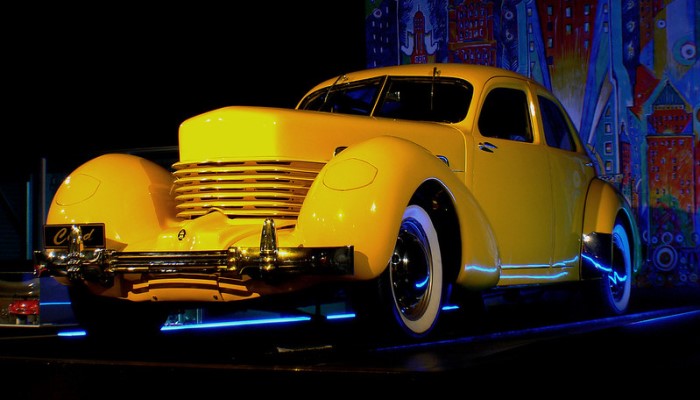
In addition, the technical shortcomings of the samples prepared for exhibitions were numerous: chronic overheating and noise in the gearbox, noise in the front-wheel drive hinges, body leaks during rain, and others.
Their elimination and the establishment of mass production took a lot of time, because of which most of the orders received were canceled. In 1937, to raise sales, Cord proposed the installation of superchargers that increased engine power by 45 to 65 HP.
The chrome-plated exhaust pipes installed on these cars (Cord 812 SC) made it possible to lower the temperature in the engine compartment and easily distinguish them from cars without compressors.
A bespoke Berline series was also offered, with a wheelbase extended to 132 inches (3.353 mm). Unfortunately, all these suggestions and improvements were too late, and after the Great Depression, few people were eager to purchase one of the most expensive cars on the market.
After producing a total of 2,907 vehicles (1,629 Cord 810 and 1,278 Cord 812), the company ceased production.
Inside the Cord 810/812
As you step inside the Cord 810/812, you are immediately transported back to a time of elegance and grandeur. The interior of this classic car exudes a certain sophistication and style that simply cannot be replicated in today's modern vehicles.
The first thing that catches your eye is the steering wheel. Made of beautiful, polished wood and adorned with intricate brass detailing, it is clearly the centerpiece of the entire dashboard.
The dashboard itself is a work of art, with its sleek, rounded edges and simple yet elegant design.
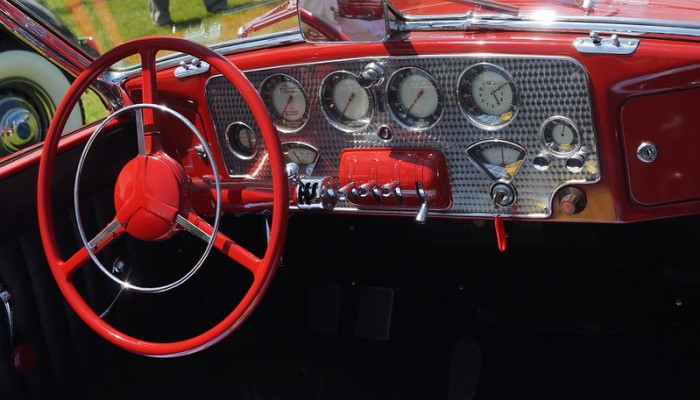
As you look around the interior, you can't help but notice the plush, comfortable seats that are upholstered in luxurious leather. Everything from the headrests to the armrests has been carefully crafted to provide maximum comfort for the passengers.
Another standout feature of the Cord's interior is the abundance of chrome accents. From the door handles to the window cranks, every inch of the interior is adorned with this shiny, reflective metal.
Overall, the interior of the Cord 810/812 is a masterpiece of design and craftsmanship. It is a true testament to the beauty and elegance of a bygone era, and it is sure to make a lasting impression on anyone who has the pleasure of experiencing it.
Cord 810/812 in Today's Market
Does the Cord 810 or 812 still have a place on our roads? The answer is a resounding YES! Despite being over 80 years old, the popular "Coffin" is still a highly sought-after vehicle for classic car collectors and enthusiasts alike.
To be the owner of this model you would have to spend at least $30,000. And that, really, is the minimum price for a Cord 810 in solid condition.
On the other hand, the most expensive sold Cord 810 is the Convertible Coupe from the March 2020 Mecum auction in Glendale, AZ, USA, and it cost the new owner a "tiny" $209,000.
As for the 812, the minimum price is similar to the 810 ($30,000), but the maximum figure can be significantly higher. For example, in January 2020 at Gooding & Company (Scottsdale, AZ), a Cord 812 S/C convertible sold for $544,000. Lovely!
Of course, owning a Cord 810/812 is not without its challenges. Parts can be difficult to come by, and finding a skilled mechanic who can maintain and repair the vehicle can be a daunting task. But for those who are willing to put in the time and effort, owning a "Coffin" is a truly rewarding experience.
Final Words
In the end, it's clear that the Cord 810/812 still holds a special place in the hearts of car enthusiasts around the world. With its timeless design and impressive performance, this car is a true testament to the ingenuity and innovation of the automotive industry.

Unique Car Zone Team
A group of several fans of everything that moves on four wheels, a few article creators, a couple of marketing strategists, designers, web developers, and lots of coffee.




